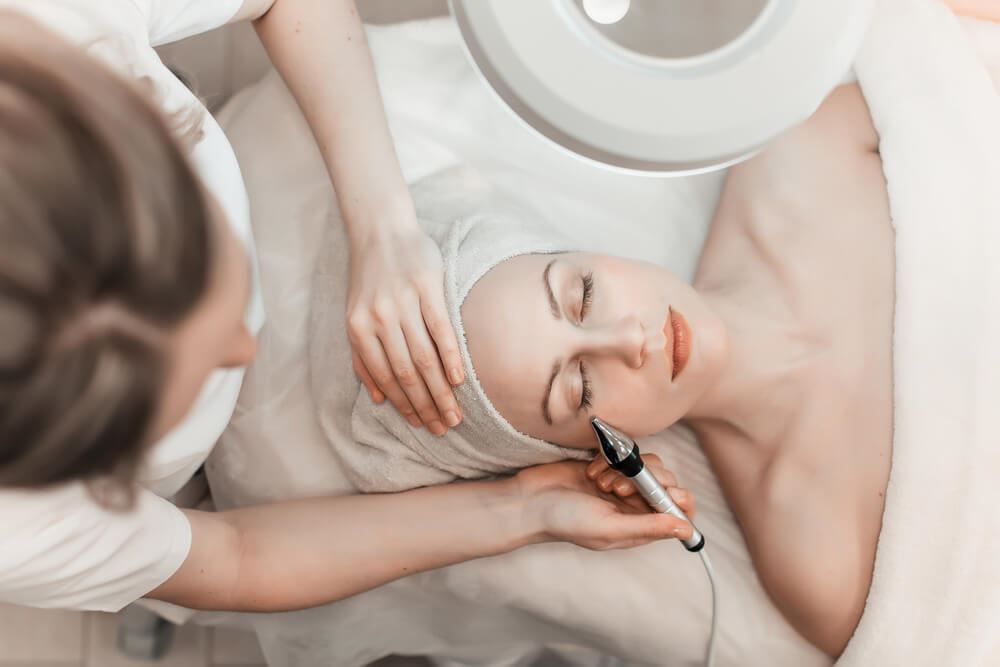California NP Med Spa Rules: 10 Critical Compliance Limits
Why Understanding California NP Med Spa Rules Is Essential
The California aesthetic market is booming, attracting many nurse practitioners eager to offer advanced cosmetic services and capitalize on this growing industry. However, nurse practitioners must navigate complex California NP med spa rules that govern ownership, clinical supervision, and operational structure. Understanding these rules is essential for NPs to establish compliant med spas, avoid legal pitfalls, and protect their licenses. Without proper knowledge and adherence to these regulations, nurse practitioners risk costly penalties, legal actions, and jeopardizing their professional reputations.
California has become one of the largest markets for medical aesthetic services in the United States. From Botox and dermal fillers to laser skin treatments and body contouring, demand is soaring. Nurse practitioners, with their medical training and increasing presence in primary and specialty care, are ideally positioned to offer these services. Yet, the unique regulatory environment in California demands a deep understanding of how California NP med spa rules limit NP ownership, control, and operational participation in med spas. These rules have evolved in response to concerns about patient safety, quality of care, and professional boundaries.
Whether you are a nurse practitioner considering entering the med spa market or an existing NP-led business aiming to expand services, knowledge of these rules is your first line of defense against costly compliance failures. This article will provide a comprehensive overview of the legal landscape, ownership structures, supervision requirements, marketing limitations, common pitfalls, and best practices to succeed in California’s med spa industry while fully respecting California NP med spa rules.
California’s Regulatory Landscape for Nurse Practitioners in Med Spas
Corporate Practice of Medicine: A Foundational Principle
The backbone of California NP med spa rules is the Corporate Practice of Medicine (CPOM) doctrine. CPOM prohibits non-physicians from owning medical practices or exerting control over clinical care decisions. This doctrine stems from longstanding concerns that clinical decision-making must be preserved as a strictly professional domain, free from purely commercial interests.
Med spas offering injectable treatments such as neurotoxins and dermal fillers, laser therapies for skin rejuvenation, or advanced body sculpting technologies are legally considered medical practices rather than beauty salons. This classification triggers the application of CPOM and other healthcare regulations. Consequently, nurse practitioners cannot independently own or control the clinical aspects of a med spa in California. Ownership and clinical authority must remain with licensed physicians.
For nurse practitioners, this means that although they can perform medical aesthetic treatments within their scope of practice, they cannot independently own the medical entity providing these services. The law requires that the medical practice, including the med spa’s clinical side, be majority-owned and controlled by a licensed physician. This ownership ensures physicians maintain ultimate responsibility for patient care, clinical standards, and legal compliance.
Understanding CPOM is critical because violations can lead to business invalidation, fines, loss of licensure, or civil penalties. The state aggressively enforces these principles to protect public safety. For NPs eager to maximize their role, compliance with CPOM under California NP med spa rules means adopting legal structures that clearly separate clinical authority and ownership.
Oversight by the Medical Board and Board of Nursing
Enforcement of California NP med spa rules falls primarily to two regulatory bodies: the Medical Board of California and the Board of Registered Nursing (BRN). Both agencies oversee nurse practitioners’ scope of practice, clinical delegation, advertising, and ownership structures.
The Medical Board focuses on physician practice and the integrity of medical entities, while the BRN regulates nurse practitioner licensing and practice standards. These boards regularly issue guidance documents, conduct inspections, and review complaints related to med spa operations. They scrutinize claims about ownership, physician supervision, and compliance with delegation protocols.
Violations of California NP med spa rules can trigger disciplinary actions ranging from warnings to license suspension or revocation. Advertising a med spa as “NP-owned” without proper physician ownership or failing to maintain required supervision agreements may result in penalties.
It is essential for nurse practitioners and their med spa teams to stay informed about regulatory updates and interpretative guidelines issued by these boards. Regulatory policies can evolve quickly in response to industry changes, so ongoing monitoring is a must to ensure continuous compliance.
Ownership and Operational Models Permitted Under California NP Med Spa Rules
Physician-Owned Medical Corporations
The gold standard for med spa compliance under California NP med spa rules is ownership through a physician-owned professional medical corporation (PMC). The PMC owns the medical assets, employs or contracts clinical staff, and controls all medical decision-making.
This structure preserves physician control over clinical protocols, quality assurance, and compliance with state medical laws. The physician-owned PMC bears full responsibility for patient care and regulatory adherence. It also safeguards the business by ensuring that CPOM requirements are met.
Establishing a PMC involves legal steps including incorporation, physician ownership documentation, and obtaining appropriate licenses. This process may seem complex, but it is foundational for lawful med spa operations in California.
Nurse Practitioners’ Role Through Management Services Organizations (MSOs)
While nurse practitioners cannot own the clinical entity, they may participate by owning or managing a separate Management Services Organization (MSO). The MSO handles non-clinical business functions such as marketing, administration, facility management, human resources, and billing.
The MSO contracts with the physician-owned PMC to provide management services. This contractual relationship must clearly separate clinical decision-making (held by the physician) from business operations. Such a structure complies with California NP med spa rules by maintaining CPOM boundaries.
NPs can thus benefit financially and operationally by running or owning the MSO, as long as the clinical side remains under physician control. Many successful med spas in California use this MSO-PMC model to balance regulatory compliance with business growth.
Joint Ventures and Revenue Sharing Arrangements
Another permissible arrangement under California NP med spa rules involves joint ventures between NPs and physicians. In these setups, the physician owns the clinical entity, but the NP plays a clearly defined role in business operations or clinical care within their scope of practice.
Revenue-sharing agreements must be carefully structured to reflect actual services provided, not patient referrals or clinical outcomes, to avoid violating anti-kickback statutes or CPOM provisions. Clear, legally vetted contracts are necessary to ensure compliance.
NPs considering joint ventures should work with healthcare attorneys to draft arrangements that respect regulatory boundaries while providing fair economic participation.
Supervision and Delegation Under California NP Med Spa Rules
Written Delegation Protocols and Agreements
California requires nurse practitioners performing medical aesthetic procedures to work under formal written delegation protocols with supervising physicians. These documents specify which procedures the NP may perform and outline the supervision level and oversight mechanisms.
California NP med spa rules mandate that these protocols be detailed, up to date, and regularly reviewed. Changes in clinical offerings or technology require protocol updates. Physicians must actively monitor NP practice through regular case reviews and quality assessments.
Failure to maintain proper delegation agreements is a frequent cause of board investigations. Proactively managing these documents reduces legal risk and improves patient safety.
Prescriptive Authority and Scope of Practice
Prescribing medications in med spas, such as local anesthetics or cosmetic injectables, requires NPs to have furnishing numbers and comply with standardized procedures developed with their supervising physicians. This is a vital component of California NP med spa rules.
NPs must ensure their prescribing practices strictly adhere to the scope defined in these procedures. Regular audits and continuing education support ongoing compliance and high-quality patient care.
Marketing and Representation: Staying Transparent and Compliant
Avoiding Misleading Ownership Claims
Advertising and public representation of med spas must accurately describe ownership and supervision. NPs cannot claim independent ownership of medical services or imply unsupervised clinical authority.
If an NP owns an MSO or holds a management role, marketing should clearly distinguish this from clinical ownership and physician supervision. Transparency helps avoid regulatory scrutiny and builds consumer trust.
Disclosure Requirements to Patients
Patients have a right to know who provides their care and the extent of physician supervision. Med spas must disclose the identity and roles of the healthcare providers involved, including nurse practitioners and supervising physicians.
These disclosures foster informed consent and legal compliance, enhancing the practice’s reputation and patient satisfaction.
Common Compliance Pitfalls and How to Avoid Them
Blurring the Lines Between Business and Clinical Authority
A major compliance risk arises when nurse practitioners or MSOs take on clinical decision-making or medical staff hiring responsibilities, actions reserved for physicians under CPOM.
Examples include setting treatment prices, determining clinical protocols, or supervising medical personnel. Such blurring of roles violates California NP med spa rules and can lead to sanctions.
Maintaining strict boundaries between business management and clinical authority is paramount.
Inadequate or Symbolic Supervision
Supervising physicians must provide genuine, documented oversight. Occasional check-ins or “rubber-stamping” protocols do not satisfy regulatory requirements.
Active supervision includes reviewing medical records, participating in clinical meetings, and ensuring adherence to standards. Robust supervision protects patient safety and compliance.
Business Challenges NPs Face Under California NP Med Spa Rules
Securing Physician Partners for Oversight
Liability concerns and time demands can make physicians reluctant to serve as medical directors. NPs must negotiate clear, fair agreements that outline duties, compensation, and liability coverage.
Legal counsel can assist in structuring these agreements to protect all parties and ensure regulatory compliance.
High Costs of Compliance
Building a compliant med spa involves substantial investment in legal services, insurance, staff training, and documentation systems. These expenses can be barriers but are essential to avoid costly violations and build a reputable practice.
Planning for these costs early is critical to long-term success.
Strategic Benefits of Collaboration Between NPs and Physicians
Expanded Service Offerings and Risk Mitigation
Collaborations enable nurse practitioners to legally offer a wider range of aesthetic procedures while benefiting from physician oversight that mitigates liability.
Structured properly, these partnerships foster growth and compliance with California NP med spa rules.
Enhanced Market Credibility
A physician-led clinical model builds patient confidence and distinguishes a med spa in a competitive market. Clear compliance signals professionalism and care quality.
Best Practices for NPs Entering the California Med Spa Industry
Consult Specialized Healthcare Attorneys
Expert legal guidance ensures your business model, contracts, and protocols comply with California NP med spa rules. Attorneys help mitigate risks and streamline operations.
Maintain Comprehensive Documentation
Detailed, current documentation of all agreements, protocols, and marketing helps during audits and investigations.
Uphold Clear Role Definitions
Avoid independent clinical decisions and clearly communicate roles to staff and patients. Training reinforces compliance culture.
Additional Strategies for Compliance and Growth
Participate in Ongoing Education and Training
Continuing education keeps providers informed of regulatory changes and advances in aesthetic medicine.
Develop Internal Compliance Checklists and Audits
Checklists help staff consistently follow procedures and marketing guidelines.
Schedule Periodic Legal Reviews
Regular consultations with healthcare attorneys ensure adaptation to evolving laws.
Build Strategic Partnerships
Collaborate with compliant physicians and stakeholders for sustainable growth.
Conclusion: Navigating California NP Med Spa Rules for Success
California’s med spa market offers exciting opportunities for nurse practitioners but requires strict adherence to California NP med spa rules. These regulations protect patients, providers, and businesses by maintaining clear boundaries in ownership, supervision, and clinical practice.
Careful navigation of these rules enables NPs to thrive in the aesthetic industry while safeguarding their licenses and reputations. Whether starting a new venture or expanding services, compliance is fundamental.
At Dike Law Group, we guide med spa owners through California’s complex healthcare regulations. Our legal experts help establish compliant structures, draft enforceable agreements, and develop customized strategies for growth.
If you are ready to align your med spa operations with California’s regulatory standards, schedule a consultation with our team. Connect with us on Instagram, LinkedIn, YouTube, TikTok, and Facebook for ongoing insights.





